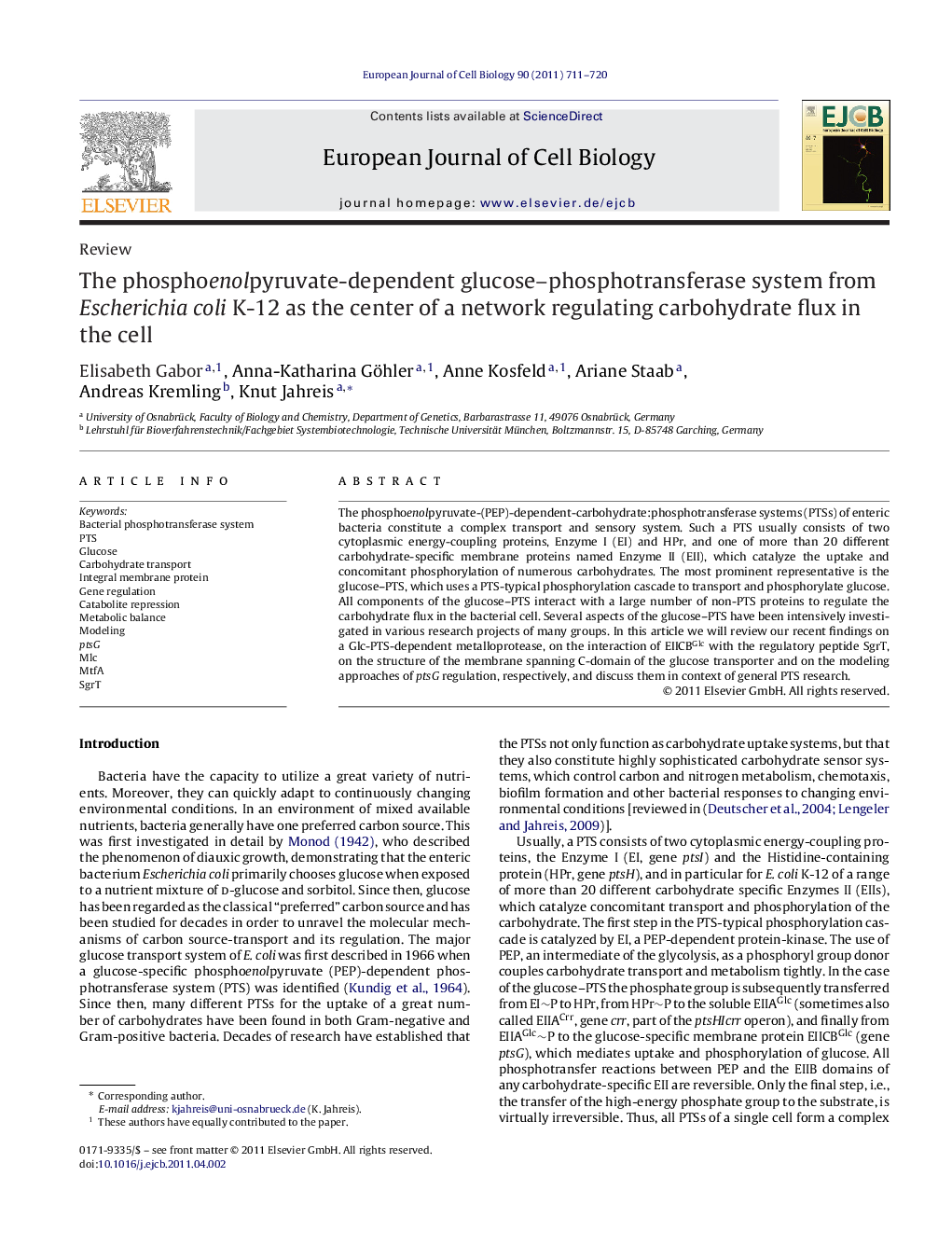| Article ID | Journal | Published Year | Pages | File Type |
|---|---|---|---|---|
| 2178716 | European Journal of Cell Biology | 2011 | 10 Pages |
The phosphoenolpyruvate-(PEP)-dependent-carbohydrate:phosphotransferase systems (PTSs) of enteric bacteria constitute a complex transport and sensory system. Such a PTS usually consists of two cytoplasmic energy-coupling proteins, Enzyme I (EI) and HPr, and one of more than 20 different carbohydrate-specific membrane proteins named Enzyme II (EII), which catalyze the uptake and concomitant phosphorylation of numerous carbohydrates. The most prominent representative is the glucose–PTS, which uses a PTS-typical phosphorylation cascade to transport and phosphorylate glucose. All components of the glucose–PTS interact with a large number of non-PTS proteins to regulate the carbohydrate flux in the bacterial cell. Several aspects of the glucose–PTS have been intensively investigated in various research projects of many groups. In this article we will review our recent findings on a Glc-PTS-dependent metalloprotease, on the interaction of EIICBGlc with the regulatory peptide SgrT, on the structure of the membrane spanning C-domain of the glucose transporter and on the modeling approaches of ptsG regulation, respectively, and discuss them in context of general PTS research.
